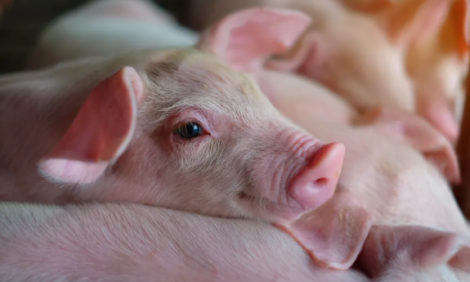



Canadian Breeding Herd Turns Down (May 07)
By Chris Harris, Senior Editor, ThePigSite. Our snapshot of the ongoing global pig industry trends as reported in May 2007 Whole Hog Brief. To read the full detailed analysis including all the commentary and graphical data, subscribe to the publication.The Canadian breeding herd continued to fall in numbers during the first quarter of the year.
The Whole Hog reports that sows and bred gilts on Canadian farms fell by 1.5 per cent up to April and farmers reported 14.1 million hogs on their farms.
Producer prices and domestic demand have been weak while disease has affected hog production in eastern Canada, the Whole Hog says. However, it says it is a surprise that there is a downturn in production in the face of healthy export trade.
A report by the George Morris Centre shows that the Canadian industry is being hit by a decline in feed acreage, rising feed prices and lower grain productivity compared to the US as well as higher production costs.
However, the Whole Hog says the George Morris Centre is right to conclude that the future is bright for the Canadian pork industry.
North American Prices Fall
A late Easter has given a boost to global pig prices. North American pork prices fell in March as US hog slaughter numbers averaged 2 million a week, but as the slaughter numbers fell in April, so the price of pork rose.
The Whole Hog says that the weak upward trend in the global pig cycle has not yet finished, but there are signs that the major players will be facing increased pressure before the end of the year.
The latest figures from the Danish Statistics Service show the Danish breeding herd at 917,000 head. This is up by 5.4 per cent since the last census in January.
However, the Whole Hog says that despite the sharp increase, the Danish breeding herd should be looked at as being stable.
Meanwhile, producer prices across the EU have continued to fall sharply. On average they are nine per cent lower than a year ago.
The European Commission has also forecast that product is going to grow at a slower rate in the medium term because of competition from poultry meat and also higher feed prices.
The medium term consumption prospects are positive, the EC says.

Japanese Imports Rise
Pork exports from the US fell in February by 11 per cent from the previous month and 5.6 per cent from February 2006.
US pork imports also fell, by 9.5 per cent compared to a year ago.
Australian pork imports have jumped as domestic production falls.
In February Australia slaughtered 409,400 pigs a drop of 0.2 per cent on 2006 and a fall of 4.7 per cent on January.
Japanese imports have shot up, with January figures showing a 5.1 per cent rise on December, according to the Whole Hog.
There is a similar trend in South Korea with March import figures 24.4 per cent up on February and 19.1 per cent up on last year.








